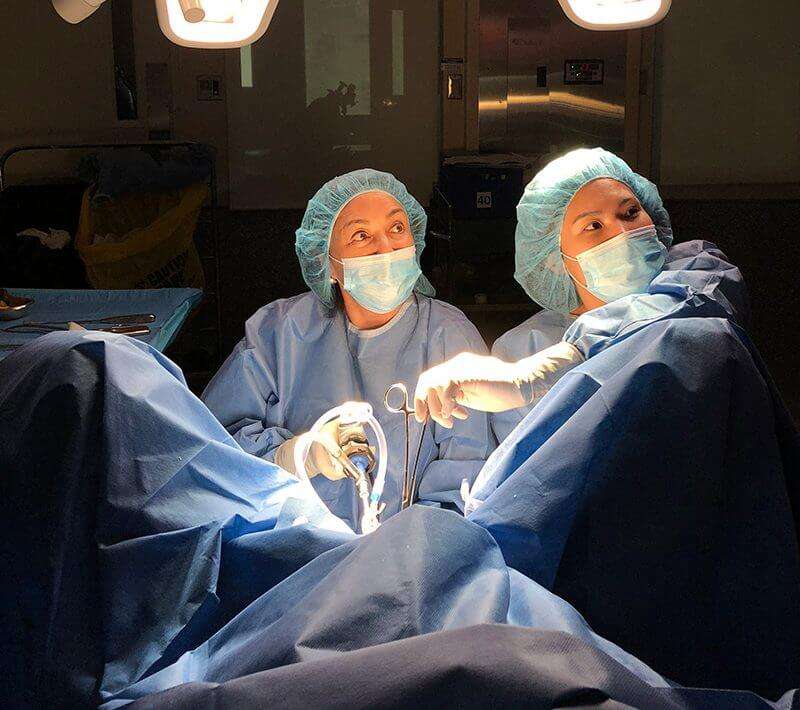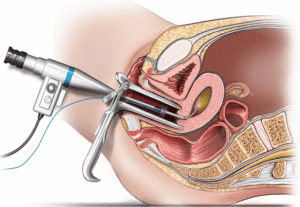Hysteroscopy is a minimally invasive procedure that uses a small device with a light and a tiny camera to examine the uterus from the inside.
Hysteroscopic examinations can be both diagnostic and therapeutic, meaning that the surgeon can make any necessary corrections inside the uterus at the same timewithout needing to make an incision in your abdomen.
Hysteroscopy is performed in individuals who have had several IVF failures, or an ultrasound scan reveals a lesion inside the uterus that needs to be corrected. Saraogi Hospital is one of the most preferred centres for hysteroscopy procedure in Mumbai.
Since 1980, Saraogi Hospital has been providing excellent and extensive gynecological and obstetric care to its patients. They excel in ectopic pregnancy, high-risk pregnancy, endometriosis, myomectomy, polypectomy, and hysteroscopy procedure in Mumbai.
Get our professional hysteroscopy surgery today.
Diagnostic Hysteroscopy
![]()
The doctor may recommend hysteroscopy to evaluate some gynecological problems, such as:
- Assess the causes of abnormal uterine bleeding.
- Analyse possible causes of infertility.
- Diagnose the reason for repeated miscarriages.
- Detect benign growths like fibroids, polyps, malformations, or scarring.
- Before a curettage and dilation procedure

Operative hysteroscopy
To correct the abnormal uterine conditions that have been found during a diagnostic hysteroscopy, your doctor may use operative hysteroscopy at the same time to avoid a second surgery. Small instruments are passed through the hysteroscope to correct the condition.
- Remove benign growths from your uterus, such as fibroids and polyps.
- Obtain a tissue sample from the lining of your uterus.
- Detect the location of an IUD.
- Place small implants in your fallopian tubes as a form of permanent birth control.
- Locate and remove uterine adhesions, which can cause changes in menstrual bleeding and infertility.
The hysteroscopy is done with the help of an instrument called the hysteroscope. It has tubes in it with an in-flow and out-flow of gas or liquid to expand the uterine cavity, a light source tube, and a tube carrying the small camera, which helps the surgeon view the contents.
What is the hysteroscopy procedure in Mumbai?
![]() Before your procedure, you may be given either general, regional, or local anesthesia.
Before your procedure, you may be given either general, regional, or local anesthesia.

Procedure
![]()
- Your doctor will begin by inserting a speculum to spread open the walls of your vagina.
- Next, your doctor will use instruments called dilators to open up your cervix.
- They will guide a hysteroscope through your vagina and into your uterus.
- They will inject gas or fluid into your uterus to expand it, making it easier to find abnormal tissue.
- The camera transmits images of your uterus to a screen.
- If there is a need for surgery, small instruments are inserted through the hysteroscope into the uterus.
Depending on what is being done, the procedure might take anywhere from 5 minutes to 30 minutes.
Hysteroscopy can be performed with only local or regional anesthetic for most diagnostic purposes, even when tiny polyps are removed.
When hysteroscopy is combined with a more extensive surgical procedure, the doctor will administer regional or general anesthetic based on the extent of the surgery.
Recovery
The purpose of the hysteroscopy will determine the period of recovery. However, there are some common side effects following any hysteroscopy surgery. You might have the following symptoms:
- Cramping
- For a day or two, there may be some bleeding or spotting.
- Shoulderache (if carbon dioxide gas was used)
- Nausea
- Dizzinessor light-headedness
Following the hysteroscopy, you will be able to eat and drink immediately.
Your doctor may prescribe pain medication to help you recover more quickly. If surgery is involved, your doctor may advise you to rest for a day or two before returning to your regular routine.
For recovery, follow your doctor’s instructions. You should avoid sexual activity for roughly a week after a hysteroscopy that isnot solely diagnostic. It decreases the risk of infection.
What are the risks of hysteroscopy?
![]()
- Infection
- Bleeding
- Damage to the cervix
- Complications due to the fluid or gas used
- Damage to organs like ovaries, bladder, or bowels
- Pelvic inflammatory disease
You should immediately contact your doctor if you have the following issues:
- Severe pain which does not subside even after the consumption of pain-killers
- Abnormally heavy bleeding
- Fever
- Chills
Trust our specialists for precise and effective hysteroscopy procedures.
FAQ
The advantages of hysteroscopy are as follows:
- Quick recovery
- Shorter stay at the hospital
- Helps avoid open abdominal surgery
- Lesser pain
Generally, an overnight stay in the hospital is not necessary as it is a minor outpatient procedure. However, if you have any complications due to anesthesia, you may have to stay at the hospital.
Hysteroscopy may not be appropriate for all individuals despite its numerous advantages. The procedure will be performed after proper examination by the doctor.
